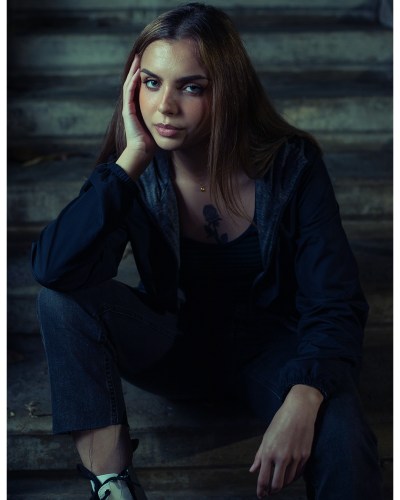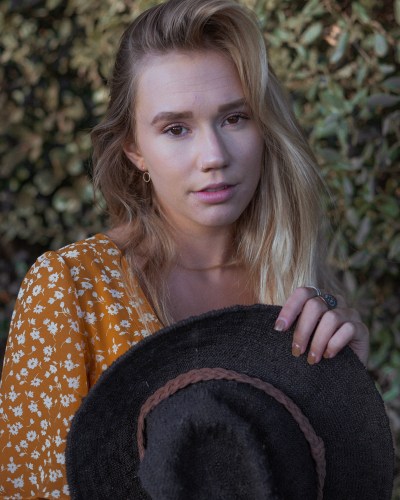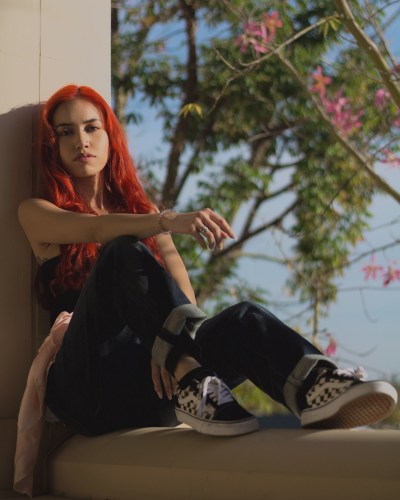In this guide, I’ll be diving into portrait photography and its importance.
More of a visual learner? Check out the video I made:
What is portrait photography?
Portrait photography is about capturing the essence, personality, identity and attitude of a person utilizing backgrounds, lighting and posing.
While this definition may sound simple, portrait photography can be one of the most challenging forms of photography to master. The goal is to capture a photo that appears both natural and prepared to allow the subject’s personality to show through.
As long as the portrait photographer can effectively capture the subject’s character, the equipment he/she uses does not really matter. While it always helps to have equipment that is state of the art, it is really not needed.
What does a portrait photographer do?
The portrait photographer is responsible for taking pictures of their subject(s). Portrait photographers find the best background/location with the correct lighting for their portrait photographs. Most portrait photographers also provide their subjects with posing tips. They also edit and print the photos to give to their clients.
Location
A common duty for the portrait photographer is to find a location for the background in the portrait photograph.
The photographer can choose to shoot their portrait photograph within a studio or they can choose to find a location outside of a studio through location scouting.
A popular choice within portrait photography is a plain background within a studio setting. This is ideal for most traditional portrait photographers because it allows them to isolate their subjects and eliminate any distracting background elements.
The other option is to find a location outside of a studio.
By photographing outside of a studio, the photographer can introduce creative elements that can help reflect the character and personality of their subject, allowing the viewer to get a better sense of the person within the photograph.
Whichever location the photographer chooses, they always ensure to have the main focus is on their subject and not the background/location.
Lighting
Lighting a portrait photograph is one of the most crucial aspects of portrait photography as different lighting setups can create a whole different attitude/emotion of the portrait.

Most portrait photographers do not rely on the camera’s built-in flash and instead either use natural light or studio lights and reflectors.
If the photographer is shooting within a studio, he/she may use a combination of reflectors paired with out-of-camera lights to illuminate the model.
If studio lighting is not available or that is not their style, they may opt for a naturally lit portrait photograph. When this is the case, the portrait photographer relies on the natural light of the sun.
This requires greater knowledge of daylight timing and body positioning in order to produce effective natural light portrait photography and if performed correctly, can produce beautiful portraits.
What makes a photo a portrait?
A photo becomes a portrait when the subject along with the background, lighting and emotion can evoke a sense of connection between the viewer and the portrait photograph.
A candid photo is not considered a portrait, however, the most candid portraits are often the best.
Why is portrait photography important?
Portrait photography can be important for many reasons and those reasons may vary from individual to individual.
A portrait photograph may be important for historic preservation, personal branding or for personal pleasure.
There is no one reason why portrait photography is important.
Just like any other form of art, it can be hard to explain why it is important. The reasons stated above may suffice in answering this question. Perhaps it is the connection a good portrait photograph can bring to the viewer that makes portrait photography an unexplainable need among the masses.
The emotions and feelings that can be evoked through a good portrait photograph reside in each one of us and only when we see it through a good portrait can we connect with that feeling on a deeper level.
Why do we need portrait photography?
We need portrait photography so portrait photographers can share their work with their audience and uncover a sense of connected emotion within them.
The audience could be the photographer themselves enjoying portrait photography for their own hobby/pleasure or it could be the family of a client whose portraits you photographed.
It is a balance between satisfying your personal self while also satisfying your client. A portrait photographer has a lot of power in deciding how they want their audience to feel when they view their portraits.
What are some of the different types of portrait photography?
There are many subgenres of portrait photography, yet all have the same goal — capturing personality and people.
1. Traditional portraits
A traditional portrait often has the subject looking straight at the camera in a posed position. These types of portraits are usually shot within a studio with the help of studio lighting and a prepared background.

These types of portraits are usually cropped at the head and shoulders and are what often come to mind when people think of portraits.
2. Lifestyle portraits
Lifestyle portraits have the goal of capturing people in their everyday environment.
A professional lifestyle portrait photographer often “directs” as opposed to “posing” to create a lifestyle portrait that is more candid and effectively illustrates the subject in their natural environment.
3. Environmental portraits
An environmental portrait places emphasis on the environment while having the person remain the subject of the photograph.
These types of portraits usually take place within a location and environment that is important to the subject.

Environmental portraits differ slightly from lifestyle portraits from the fact that environment portraits are often more “posed” than lifestyle portraits.
4. Street portraits
Street portraits are often candid and unplanned. While there is planning within the approach to street portraits, the posing or actions of the subjects are mostly unplanned.
5. Beauty portraits
Beauty/glamour portraits often place emphasis on the beauty of the subject — often involving planning in regards to wardrobe and professional makeup.
6. Fine art portraits
Fine art portraits are often debated on whether or not they are a subgenre of portrait photography.
Many fine art portrait photographers are usually inspired by other types of artworks such as paintings.
These portraits are usually creative in nature allowing the photographer to explore their creative ideas.
7. Family/group portraits
Family and group portraits involve multiple people.
These types of portraits often involve group poses and interactions between the members of the group in order to create a candid photograph.
Many family/group portrait photographers also utilize prompts in order for the subjects to act out a certain scenario, often producing very candid results.
What are your thoughts?
Now that we have covered what a portrait photograph is, I want to hear from you!
Is there something new you learned about portrait photography? Or is there something else to add regarding portrait photography?
Either way, leave a comment down below!
Tell your story with the second annual Visual Storytelling Conference!
Experience four days of interactive, online training sessions featuring a range of educational content with experienced photographers and content creators. This free event kicks off with a series of technical boot camps to build essential skills, followed by live, online sessions on photography, video, business and social media. Join live from March 10-13, 2022!
